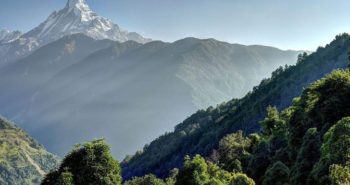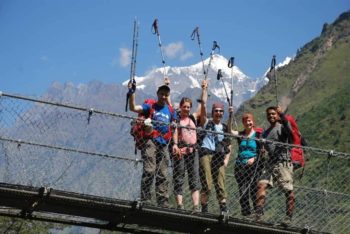When is The Best Time to Visit Nepal?
One of the most common inquiries we receive from travellers is “When is the best time to visit Nepal?”
The peak season to travel is Autumn, from late September to late November when the weather is clear and dry. In Autumn the weather is not too cold at altitude and not too hot at lower altitudes. It’s just right.
Nepal however, has such diverse geography and climatic variations that it can cater to travellers almost all year round.
If you are planning to visit Nepal, first you have to be clear about the purpose of your visit. Do some research online about what you want to do. Look for reliable, qualified tour guides and prepare well. Then you can visit Nepal at any time of the year- in any season.
1. Spring:
Spring in Nepal is from March until May. The temperature is about 22℃ with slight rainfall occasionally at night and clear skies in the morning. This is the time for new buds and flower blossoms.
You can enjoy adventure activities like Paragliding, Bunjee, Rafting, and Trekking. Springtime is when the Rhododendrons burst into flowers. Entire hillsides are covered in multi-coloured blossoms which will leave you spellbound. It is one of the major tourist attractions in Nepal.
2. Summer:
Summer extends from June to August and is the quietest season for trekking. Temperatures can reach 30℃. It is the time of the monsoon rains and the season for farming. Daily afternoon downpours, high humidity, leeches, flooding, and landslides make trekking difficult in these conditions.
However, this is a good time to trek in the Dolpo and Mustang which sit in the rain shadow of the Himalayas. Trekking is also possible in the Everest region just remember to factor in possible delays flying out of Lukla due to weather.
Oh, and remember to bring a trekking umbrella as the humidity makes wearing waterproofs unpleasant.
3. Autumn:
Autumn is from September to November with temperatures ranging from 10℃ to 25℃. It is when the biggest festivals take place like Dashain and Tihar.
During this season fields turn yellow with crops of barley and wheat ready for harvesting. It looks like the land has just had a shower after the monsoon rains. You can enjoy panoramic mountain views during this time. Trekking is popular during this season with clear blue skies.
4. Winter:
Winter lasts from December to February. Temperatures during the day can be 16℃ but nights rapidly drop to down below 0℃ as soon as the sunsets. It is the dry season with bare hills and mountains. Midwinter offers the clearest views of the Himalayas.
Temperatures at high altitudes can drop to -20℃ and high-altitude tea houses are often closed. If you are willing to brave the cold and take appropriate clothing then Winter can be an incredible no other tourist experience.
If you are planning to visit Nepal during Christmas and want to have milder temperatures, you can tour the Central Valley or Pokhara. Short tours to Ghandruk, Ghorepani, Chisapani Nagarkot, the Kathmandu Valley, and Namche Bazaar are also possible.
Purpose of your visit
1. Religious and Cultural Tours: (Suitable for all Season)
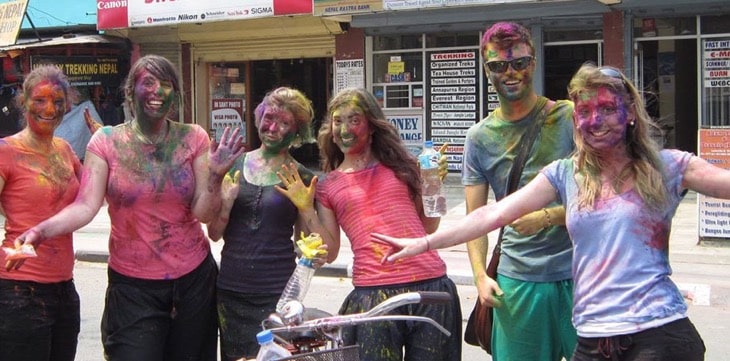
Nepal has more UNESCO World Heritage sites packed into it than anywhere else in the world. Kathmandu alone has seven. Nepalese festivals and religious ceremonies are world-famous and occur almost all year round.
Some sites such as Pashupatinath, Swyambhunath, and Baudhanath are must-visits even for trekkers. Muktinath, Janaki temple, Lumbini, Pathivara, and Gosaikunda lie outside the valley and are also worth visiting. These places are cultural feasts and important Buddhist and Hindu religious pilgrimage sites.
If you are planning to just explore Kathmandu, you can visit any time of the year. Exploring them is easily done and several can be visited in a day by car.
To visit religious places in southern Nepal any season except Summer when the humidity and rain make traveling unpleasant is easily possible.
If you wish to travel to Muktinath or Mustang then you should plan for either Spring or Autumn. Other seasons have more extreme climates and make traveling there difficult.
This is a list of just some of the festivals in Nepal showing their incredible breadth and variety. Some occur on set dates and others are linked to lunar events. Magical Nepal can help you with information and getting to any of them.
Dashain: 15 days celebrating the victory of good over evil.
Tihar: 5 days is the festival of lights.
Chhath: 4 days dedicated to Surya the sun god.
Bisket Jatra: 3 days celebrating the new year (Hindu Calendar).
Bajra Jogini: 8 days when the gods of Bajrayogini temple are brought to town.
Losar: 15 days celebrating the Tibetan New Year.
Gai Jatra: 7 days celebrating life, death, and renewal.
Mohani: 10 days celebrating Hindu Goddesses slaying demons. Holi 1 day is the festival of colours.
For treks to remote religious areas, there is Gosai Kunda the abode of Shiva and Gauri. March to June or September to December are the best months to visit Gosai Kunda. But if you are an adventure lover, you can visit in winter when the lake turns to ice.
The major celebration in Upper Mustang is the Tiji festival in May.
Religious festivals are an excellent way for tourists to immerse themselves in the moment. Monasteries and temples full of colour, pageantry, singing, dancing, and feasting show you Nepal in all its glory.
2. Trekking: Spring and Autumn
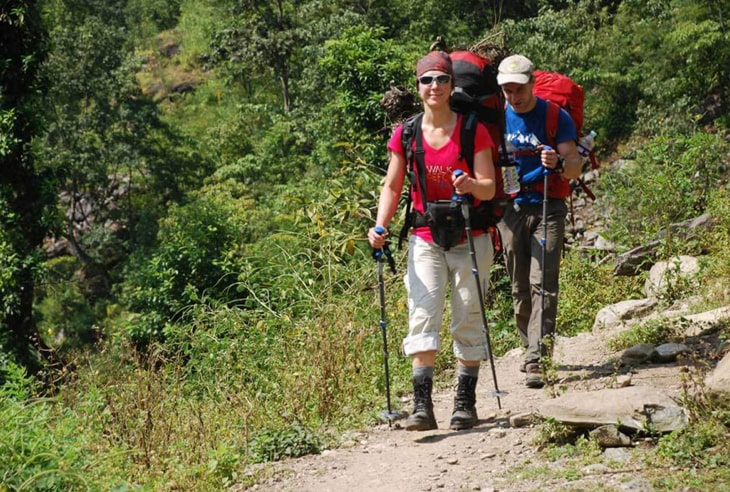
The topography and climatic situation of Nepal is not the same everywhere. With the change in altitude, the climate changes. So does the environmental situation. This change affects trekking in Nepal. Treks range from higher altitudes, mountains, high hills, or easy treks.
If you are planning to trek in high mountains then September to November is the best season for trekking. Or you can plan to visit from March to May, another best trekking season. During these months you can plan to go on longer treks or mountain expeditions. The weather is clear and the mountain view is clear during this time.
You have different choices before you pack your bags for trekking. You can choose Everest region, Annapurna region, or Kanchenjunga for your memorable trek. Or, to add difficulty, you can go to Makalu region, Langtang, Manaslu, and Ganesh Himal Region. It will be wise if you choose either Spring or Autumn for these treks. You will encounter other travelers on your route in the temperate weather.
But if you are planning for Summer, trekking is difficult due to the worst road situation. Instead, you can trek to desert parts of Nepal like the Mustang, Nar-Phu Valley, and Dolpo regions. These places are behind the Himalayas where you can enjoy summer trekking. As these places have no rainfall.
In winter you can go on treks to lower elevations. Like the Ghorepani circuit, Royal Trail around Pokhara, Dhampus trek, and Helambu trek. In this season, the temperature is colder but you can enjoy clear views with fewer crowds.
Yet, the temperature won’t stop you from pursuing your dream. If you dare to, you can trek to your desired places at any time of the year.
3. Hiking around the valley: Suitable for all season
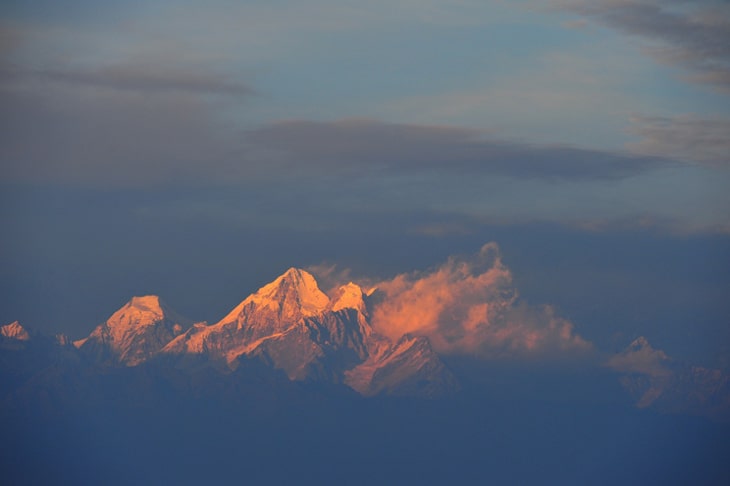
A high-altitude mountain trek is popular among travelers. Besides this, you can also go for short and easy hikes around the valley. We have different hike routes around the valley for a shorter time. You need not worry if you are unable to go on mountain treks. Instead, you can enjoy treks around the valley.
The hillocks surrounding Kathmandu are perfect for short and easy hikes. The different hike routes- Champadevi, Chandragiri, Nagarjuna- Jamacho, Shivapuri, Changunarayan, Nagarkot, Ranikot, Dhulikhel. Since the temperature around the valley is similar, you can visit these places any time of the year. But, you have to be careful of leeches and earthworms during Rainy seasons.
4. Honey Hunting:
Honey Hunting in Nepal dates back hundreds of years. Religion plays an important role in collecting wild honey. Gurung and Magar ethnic groups construct ladders out of local bamboo and twine to collect the Honey. Nepalese honey bees are big and aggressive.
Their hives are located on cliff faces hundreds of feet above the ground. Smoking the bees takes place on the ground and the ladders are then unrolled from the top of the cliff. With almost no protective clothing the Honey Hunter climbs down, smokes the bees, and cuts the hives from the cliff lowering them to the ground. This incredible ancient practice is now available to trekkers.
Travelling with the group of honey hunters you get to experience this incredible journey. Learn how the ropes are lowered, how the honey is processed into wax bricks and bottled. Autumn or Spring is the time for this adventure.
Popular honey-hunting areas are Bhujung, Pasgaon, Dhading, and Jharlang. Except for Bhujung Ghalegaun, honey-hunting trips have not been developed yet. Magical Nepal can organize them for you as a separate excursion or as a side trip on your way to different treks.
You may even be able to ask if there is any Mad Honey available. Mad Honey is produced when bees collect pollen from Rhododendron blossoms. The honey contains grayanotoxins and is hallucinogenic. Be careful though as ingesting more than a teaspoon of Mad Honey can kill you.
5. Jungle Wildlife Tours:
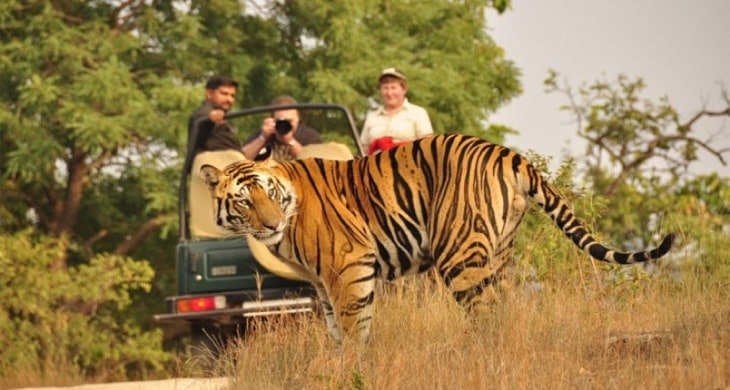
Nepal is so much more than just the Himalayas. In the south tropical jungles teams with wildlife include; One-Horned Rhino, Indian Elephant, Crocodile, Tiger, Leopard, Sloth Bear even Hyena. 50 mammal species, 525 bird species, 55 amphibians, and reptiles occupy Chitwan National Park alone.
Sauraha is the main town adjacent to the park and Rhinoceros are often seen strolling through the town, so keep your eyes open. Chitwan National Park, Bardia National Park, Khaptad National Park, Dhorpatan Hunting Reserve, and Shuklaphanta Wildlife Reserve are all waiting to be explored. March, April, September, October, November and December are the best months to visit. Lush forests, lakes, rivers, and wetlands await foot safaris, Canoe trips, and Jeep safaris.
You can visit Chitwan National Park from February to May. This is a major tourist destination and thousands of tourists visit all year round. You can take part in elephant bathing, visit breeding centers, and learn about local conservation and wildlife projects.
Koshi Tappu is famous for Bird watching and Arna (wild water Buffalo). You can visit all year round the wet season from July to September.
Bardia National Park is remote and your best chance to see a Tiger in the wild. It is home to Hyenas, Sloth Bears, Blue Bulls, Black Bucks, and Wild Boars. You can visit from mid-September until mid-December and from the start of February until the end of May.
Khaptad National Park has 567 species of Flora. Chir Pine, Rhododendron, Oak, and Alder forests cover the park. The place is home to Leopards, Himalayan Black Bear, and Musk deer. The best time to visit is Autumn and Spring.
Dhorpatan Hunting Reserve is the only hunting reserve in Nepal. The place consists of forests, marshland, and flat meadows and has snow leopards, musk deer, red pandas, and blue sheep. The best time to visit is from March to June. You can hunt too, but before you have to complete some formalities.
6. Paragliding:
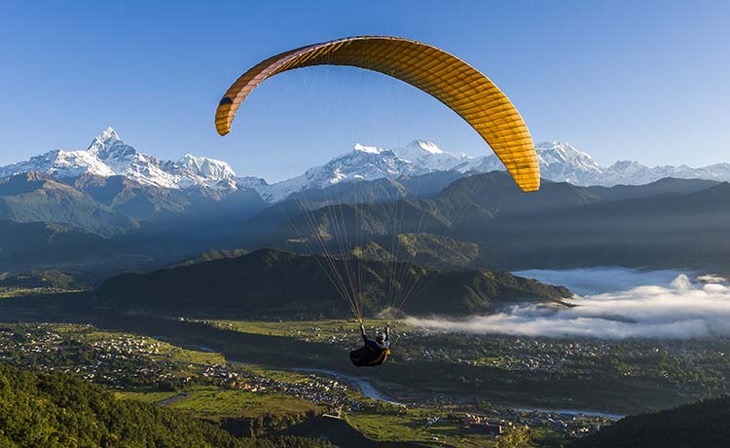
Do you dream of flying over a lake with 8000-metre snow-capped peaks in the background? Or hand-feeding Himlayan Eagles while flying? Paragliding and Parahawking are amazing experiences. Silently flying over valleys, monasteries, lakes, and jungles in Pokhara is truly a unique adventure.
You can participate in Paragliding from several companies. Weather plays a huge part in this as you can only glide in good weather. The peak season with the best views is September to November and February to March. New paragliding areas are opening up all the time. Phulchoki paragliding in the Kathmandu Valley is among those.
7. Rafting:
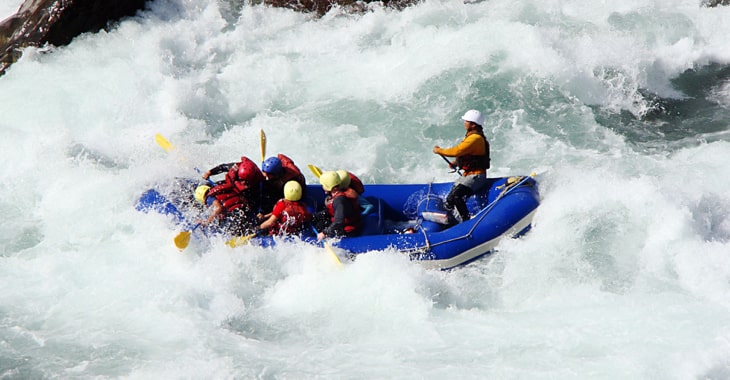
Nepal is chock full of rivers, lakes, and streams. There are many fast-flowing rivers that will satisfy even the most daring adrenaline junkie.
The Bhotekoshi, Sunkoshi, Trishuli, Kali Gandaki, and Seti are major undertakings with rapids all the way up to Grade 5. September and October is the best time for white water rafting but, if you are a beginner you can visit from July to August when water levels are lower.
